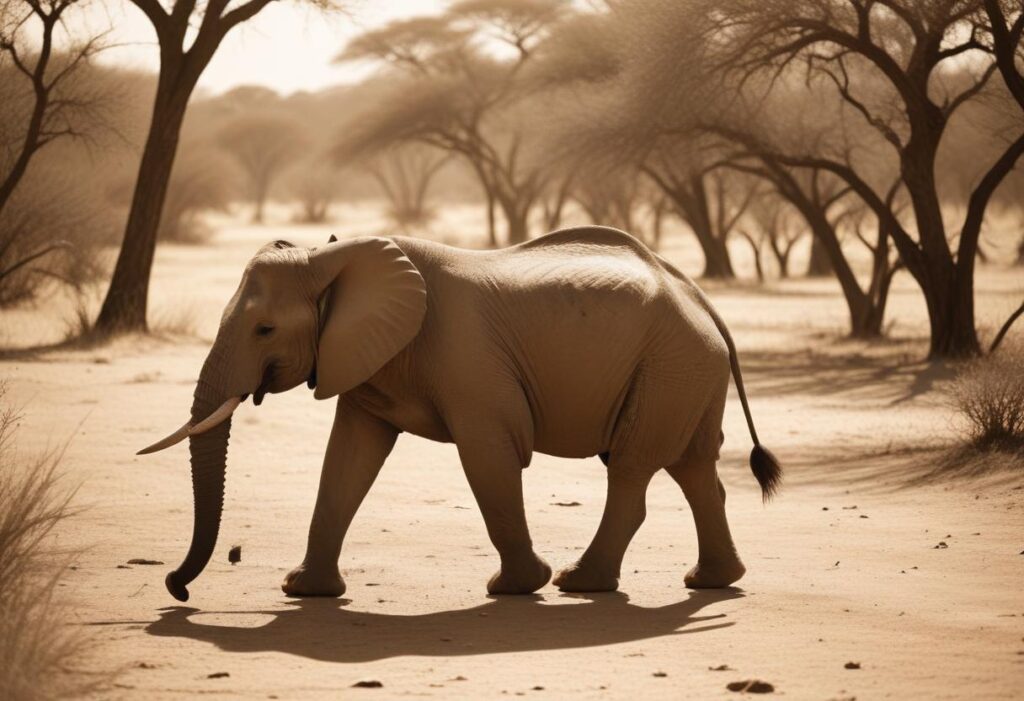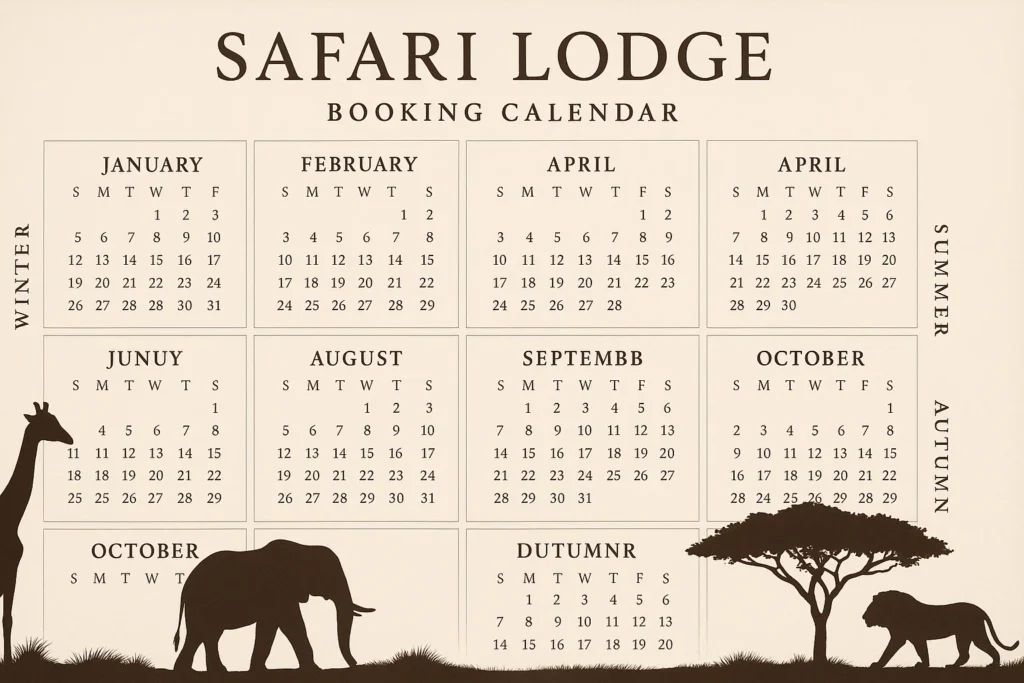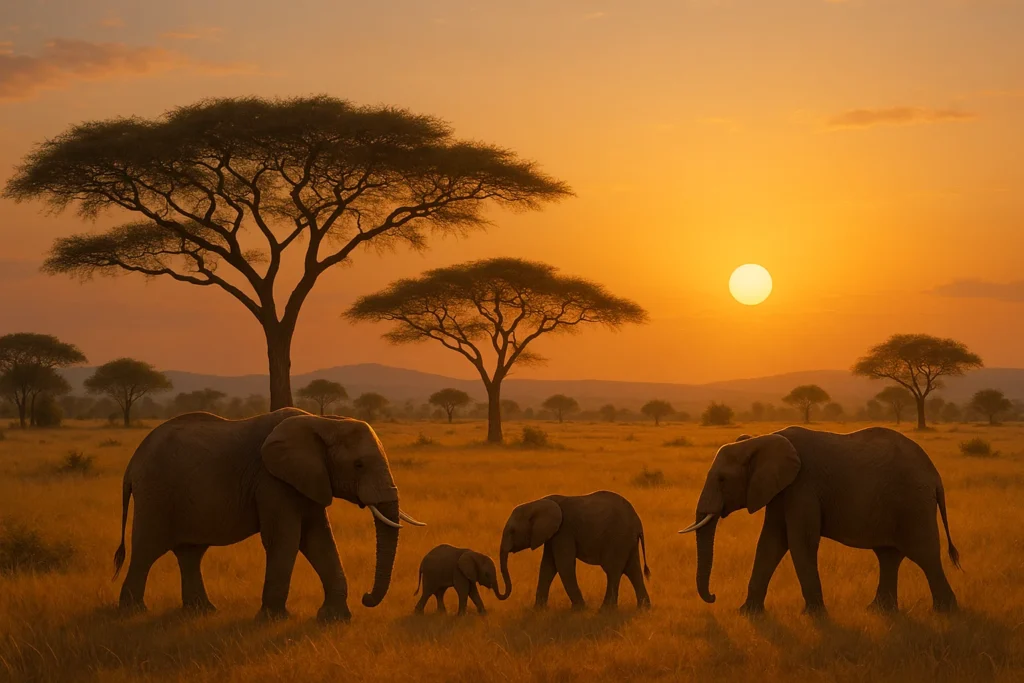Tarangire National Park offers a captivating safari alternative to the busier Serengeti or Ngorongoro. Nestled in northern Tanzania, it delivers unique landscapes, abundant wildlife—especially elephants—and a more intimate safari experience. Here’s your comprehensive guide to exploring one of Africa’s best-kept safari secrets.
When to go
Dry season (June to October)
- Best for wildlife concentrations: Water holes dwindle, and Tarangire’s permanent rivers attract dense populations of elephants, buffalo, and zebras.
- Ideal climate: Pleasant days (25–30 °C), cooler nights, and clear skies—perfect for game drives.
Wet season (November to May)
- Green landscapes and baby animals: Lush scenery, ideal for photography; February–March births season brings newborn herds.
- Fewer visitors: The park is quieter, offering exclusive encounters.
- Considerations: Afternoon rains in March–May can make dirt tracks muddy; 4×4 vehicles with high clearance are recommended.
Verdict: For first-timers seeking iconic wildlife and baobab vistas, June–October is prime. For green landscapes and solitude, opt for December–February or the short rains in late November.
(Reference from timing advice commonly shared across travel guides.)
Landscapes and wildlife highlights
Baobab-studded woodlands
Tarangire is renowned for its majestic ancient baobab trees—some over 1,000 years old—creating dramatic backdrops for wildlife sightings and photography.
Elephant haven
The park hosts one of Africa’s densest elephant populations (6,000 to 8,000 individuals). Large breeding herds congregate near the Tarangire River, offering unforgettable encounters.
Diverse wildlife beyond elephants
Expect to see:
- Predators: Lions, leopards, cheetahs, and spotted hyenas (often near riverbanks).
- Herbivores: Buffaloes, giraffes, wildebeest, impala, waterbuck, and bushbuck.
- Birdlife: Over 550 species, including Senegal, yellow-collared, and red-faced lovebirds.
Birds and seasonal spectacles
Wet seasons bring vibrant birdlife and lush vegetation—ideal for birders. Migratory species join locals near permanent water sources, offering rare sightings.
Safari experiences & activities
Game drives
- Half-day and full-day options: Early morning and late afternoon drives are best for wildlife action.
- Night drives: Some lodges offer guided nocturnal excursions for further sightings (confirm with your camp).
Walking safaris
Limited guided walks accompany camp stays—walk short distances with an armed ranger, offering close views of tracks, flora, and smaller wildlife.
Cultural visits
Enhance your trip with visits to Maasai villages nearby, where you can learn about local traditions, beadwork, and day-to-day life.
Where to stay
Lodging ranges from luxury to budget, with options inside and just outside the park:
Luxury & mid-range camps
- AndBeyond Lake Manyara Tented Camp: Upscale safari tents beneath acacia canopies.
- Tarangire Treetops: Elevated suites with private decks—close to wildlife.
- Olakira Tented Camp: Elegant interiors blended with wild surroundings.
Affordable lodges & camps
- Tarangire Sopa Lodge: Hilltop views in the park’s heart.
- Acacia Tarangire Tented Camp: Budget-friendly with comfortable tented housing.
Considerations
- Inside the park: Offers early access to wildlife and impressive landscapes.
- Outside the park: Slightly lower rates and easy access—but expect early starts for game drives.
Access & logistics from Arusha
Distance & transport
Tarangire lies about 120 km southeast of Arusha, roughly a 2–3 hour drive via sealed roads linking to gravel paths within the park.
Entry gates
- Main gate: Emboreet Gate (southern entrance).
- Secondary: Kuro and Tanrangire River Gate (for various lodges).
Transport options
- 4×4 safari vehicles: Standard for guided tours, ideal for rough terrain.
- Self-driving: Possible, but a 4×4 vehicle is essential—rentals are available from Arusha.
- Charter flights: Light aircraft land at nearby airstrips like Manyara and Kuro—fastest but pricier.
Fees & permits
Park fees vary by nationality and season. Most lodges include national park entrance in the package; confirm this before booking.
Suggested itinerary
| Day | Morning | Midday & Lunch | Afternoon & Evening |
|---|---|---|---|
| 1 | Depart Arusha for Tarangire | Lunch at camp | Afternoon game drive around river |
| 2 | Dawn game drive targeting elephants | Return for early lunch or picnic | Optional walk or night drive before dinner |
| 3 | Early game drive with wildlife | After-lunch departure for Arusha | Arrive Arusha by late afternoon/evening |
Add-ons: Fitted in easily on the way to or from Lake Manyara, Ngorongoro, or Serengeti.
Why choose Tarangire?
- Less crowded than Serengeti or Ngorongoro.
- Unique baobab forests and riverine landscapes.
- Outstanding elephant sightings year-round.
- Great birding opportunities, especially in wet season.
- Ideal for first-time safari-goers or those craving an authentic, laid‑back experience.
Conclusion
Tarangire National Park is the ideal choice for travelers seeking a wildlife-rich safari experience without the crowds of Tanzania’s more famous parks. With its elephant herds, distinctive baobabs, and peaceful ambiance, the park delivers a soulful safari experience. Whether you choose the dry-season game drives or the lush vibrance of the wet season, Tarangire promises memorable wildlife encounters and unmistakable African landscapes.
Frequently Asked Questions
A compact DSLR or mirrorless camera with a telephoto lens (200–400 mm) works well—plus extra batteries and memory cards for long game drives.
Yes, many lodges welcome children. Minimum ages for certain camps may apply (e.g., age 6+); always check with your selected lodge.
Hot-air balloons are available over the southern corridor near Tarangire; book in advance through your lodge or tour operator.
Yes. Tarangire is a low–to–moderate malaria risk area. Bring and use mosquito repellent and consider antimalarial medication after consulting your doctor.






